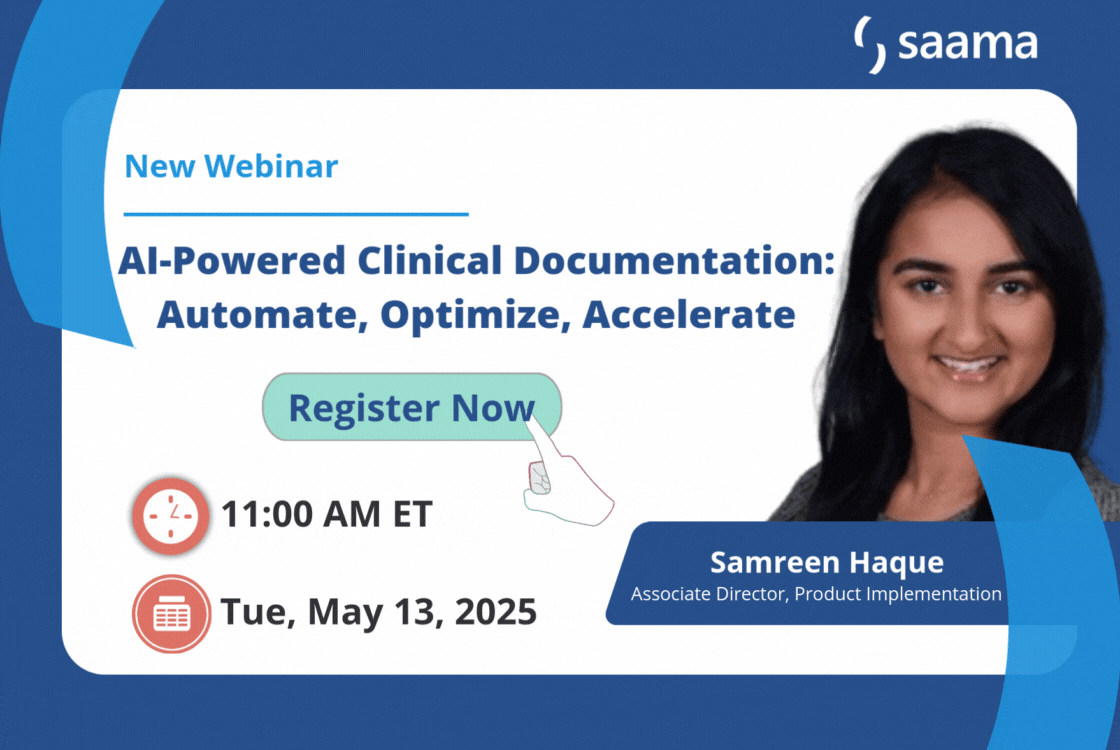Within clinical data management (CDM), there are numerous data quality, structure, volume, and collection challenges that make the process overly complex and difficult to oversee.
Introducing AI as an augmentative tool to CDM brings a host of benefits, including reducing the time taken to issue a query, automating routine data management processes, freeing up time to focus on higher-value data queries, and accelerating time to database lock. It’s a scalable solution that can enhance the entire management lifecycle.
Despite its ease of use, rolling out AI and machine learning (ML) capabilities across CDM is not a simple or speedy process. It does require time, careful planning, and strategic preparation – Upfront investments that will all pay off when integrating AI capabilities across your portfolio.
Why can’t life science organizations immediately integrate AI into their workflows?
Despite the efficiencies it brings, a technology as disruptive as AI cannot simply be dropped into an existing organizational infrastructure, and expect it to produce immediate efficiencies.
The biggest impact that AI has on CDM is the consolidation of multiple tasks – tasks that have, historically, fragmented across multiple roles with specific skill sets and technical ability within the data management lifecycle.
For instance, a Clinical Data Manager’s core responsibilities include ensuring that all data collected before and during the trial is accurate with respect to both protocol and compliance requirements. A Clinical Data Scientist, on the other hand, is responsible for analyzing complex clinical data to derive insights for further reporting and decision-making, while a Clinical Programmer is primarily focused on tasks related to ingesting, transforming, and manipulating clinical data as well as dashboard development and other technically-oriented duties.
Before life science organizations can roll out AI, ML, and generative AI (GenAI) capabilities, they need to consider what people, processes, and related technology impacts exist between the current state and a successful implementation.
How to change existing processes to adopt AI effectively in clinical data management
With AI and ML technologies becoming more widespread within clinical development, the technical barriers that always existed between a typical Clinical Data Manager who is protocol savvy and the ability to do more technical, programmatic, work have been removed. Historically, if a Clinical Data Manager needed a listing of conditional discrepancies between a dataset from EDC and an external vendor transfer file, there were essentially two options – Combine the data manually in an Excel pivot table or request the necessary listing from a Clinical Programmer and create all of the necessary specs, test scripts, and other deliverables. Using AI-powered solutions, Clinical Data Managers can now create their own review materials by chatting directly with the solution, reducing dependency on tech-savvy roles as well as redundant software solutions.
That’s just one example of the many ways that AI is merging previously siloed, segmented processes and capabilities across clinical development, requiring personnel to possess multi-area skills and technical awareness to leverage AI to its full potential.
However, most processes that make up clinical data management are still formalized in SOPs and work instructions that produce clear role delineations, fixed workflows, configuration & validation responsibilities, and set teams and ownership for overseeing one or two key areas of clinical data management.
Without implementing the necessary changes to these current processes that require individual tasks to be executed in segmented, linear fashion leveraging multiple disparate roles, life science organizations won’t be able to fully capitalize on the opportunities that AI presents to improve speed, efficiency, and quality of data management.
Before any changes can be made to current processes and SOPs, organizations first need to have a clear understanding of exactly where and how AI will impact and change procedures and staff responsibilities.
It’s a multi-step process that begins with understanding the purpose and impact of AI within and across CDM operations, incorporating Quality Assurance (QA) input along the way to ensure that while processes may be changing, there is no loss of compliance and transparency. This is followed by an overhaul and redesign of existing SOPs and work instructions that incorporate and allow for the operational and task-related shifts that AI introduces across an organization’s infrastructure. Lastly, after the necessary changes and preparations have been made, clinical data management personnel can be brought up to speed on the new operating model and AI and ML tools can finally be integrated into the CDM lifecycle.
Conclusion
AI, particularly GenAI, can speed up, simplify, and enhance every stage in the CDM lifecycle. The key to success is implementing AI strategically with a solid understanding of where and how it will impact your workflows, role responsibilities, and outcomes.
At Saama, we’re veterans when it comes to AI and ML implementation within clinical trials and specifically CDM. Our suite of proprietary AI-powered solutions can augment and enhance your CDM operations, allowing you to reach database lock faster and with fewer delays. We can also provide advice and insight into where your existing CDM workflows could benefit from leveraging AI. If you’d like to learn more about our AI solutions, book a demo and we’ll walk you through the benefits.

